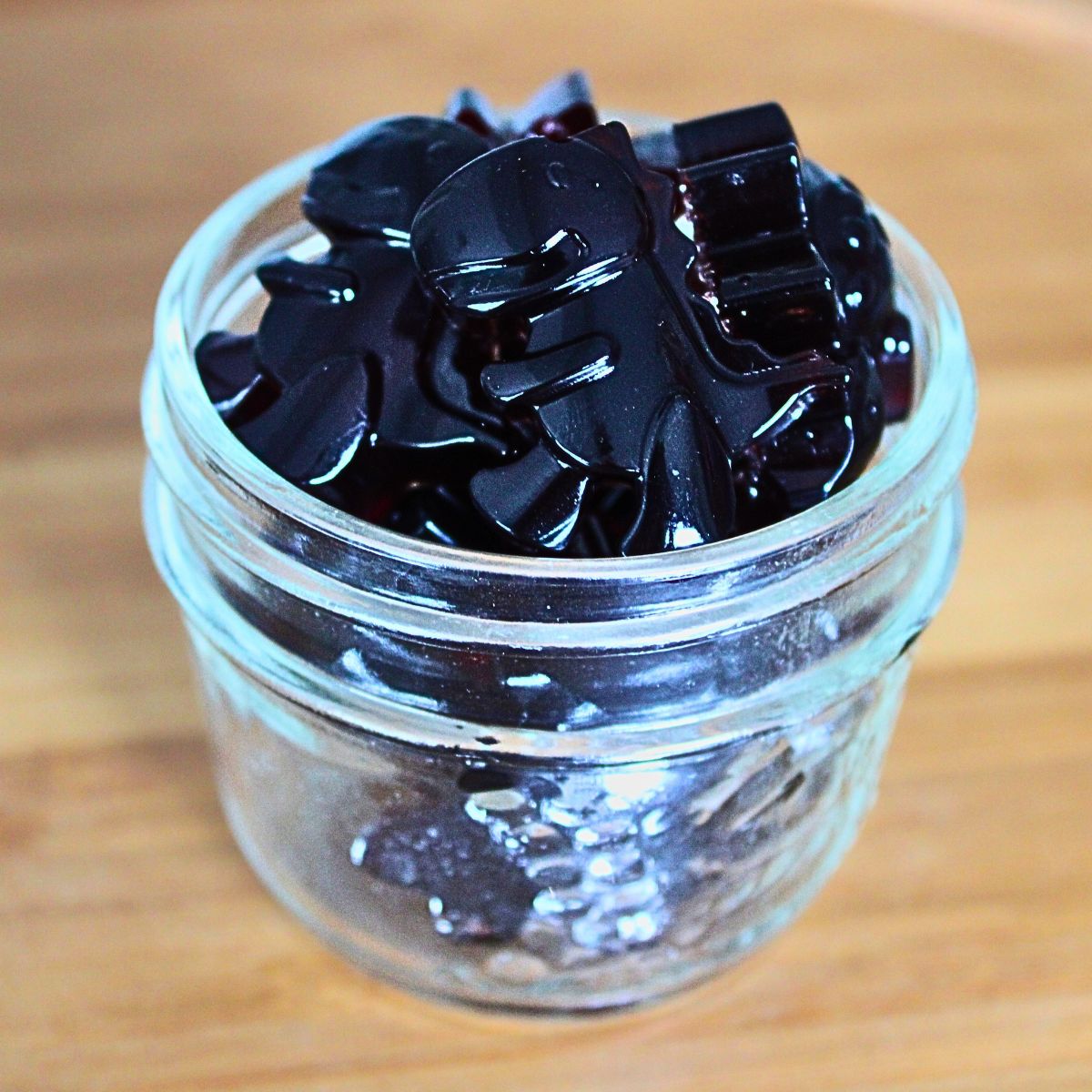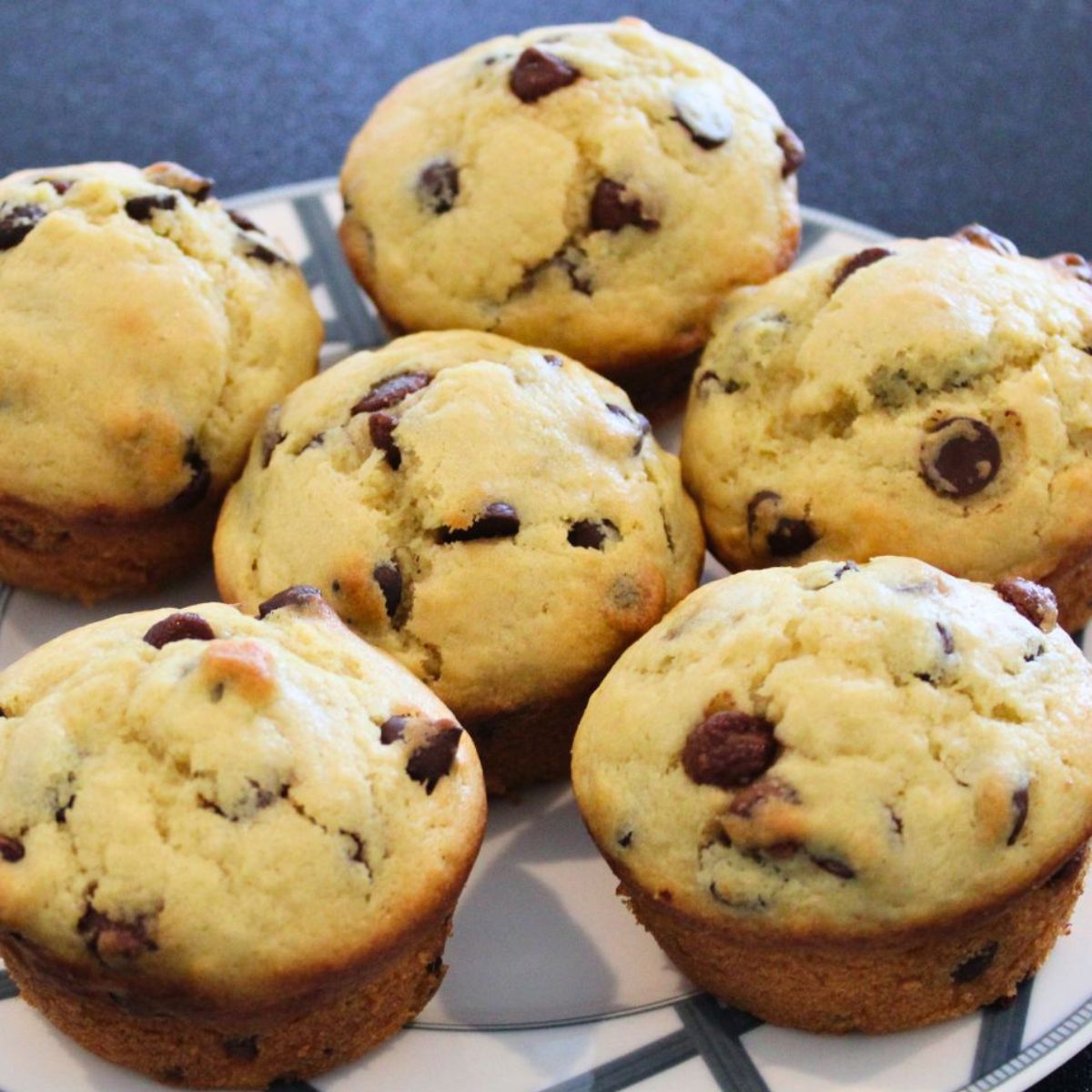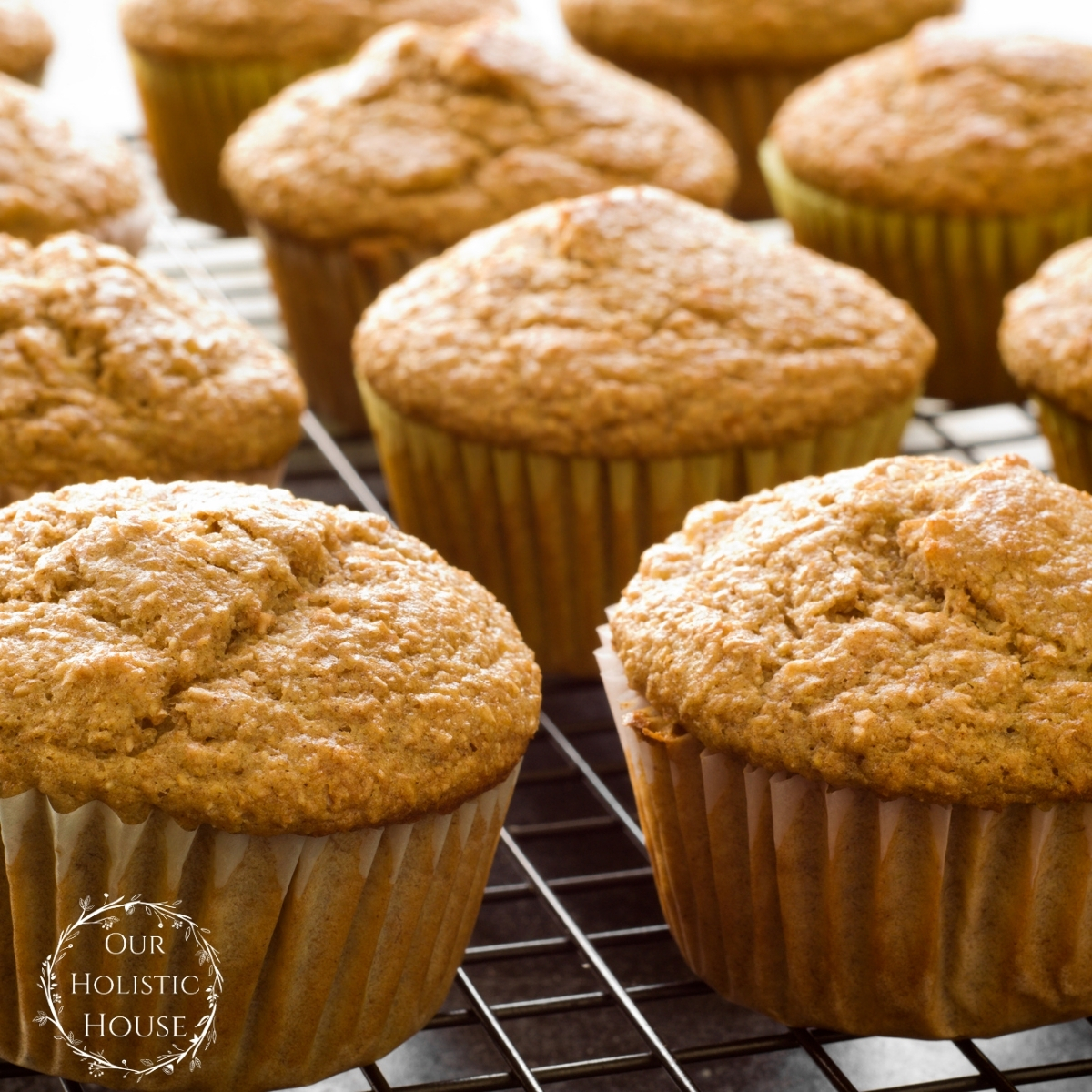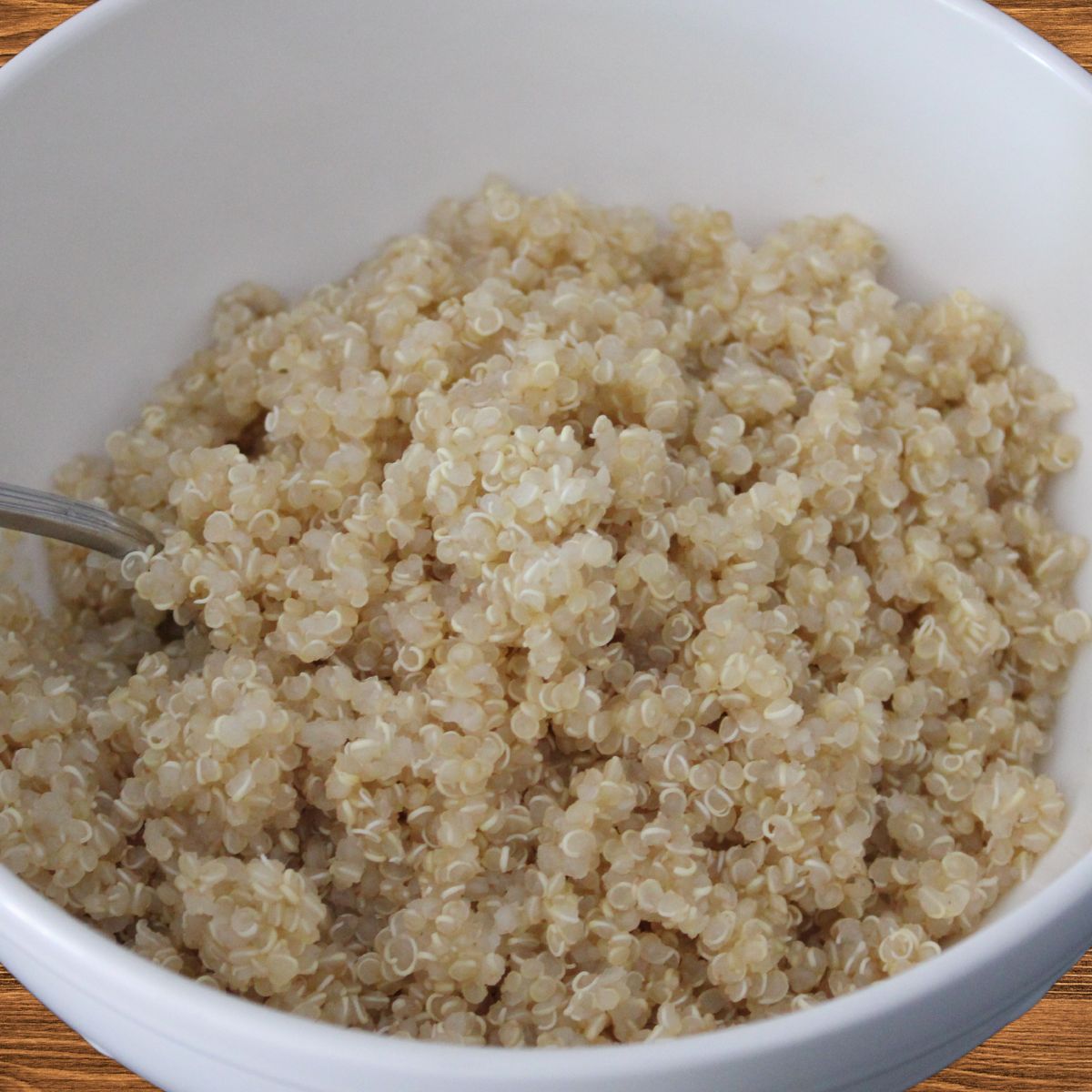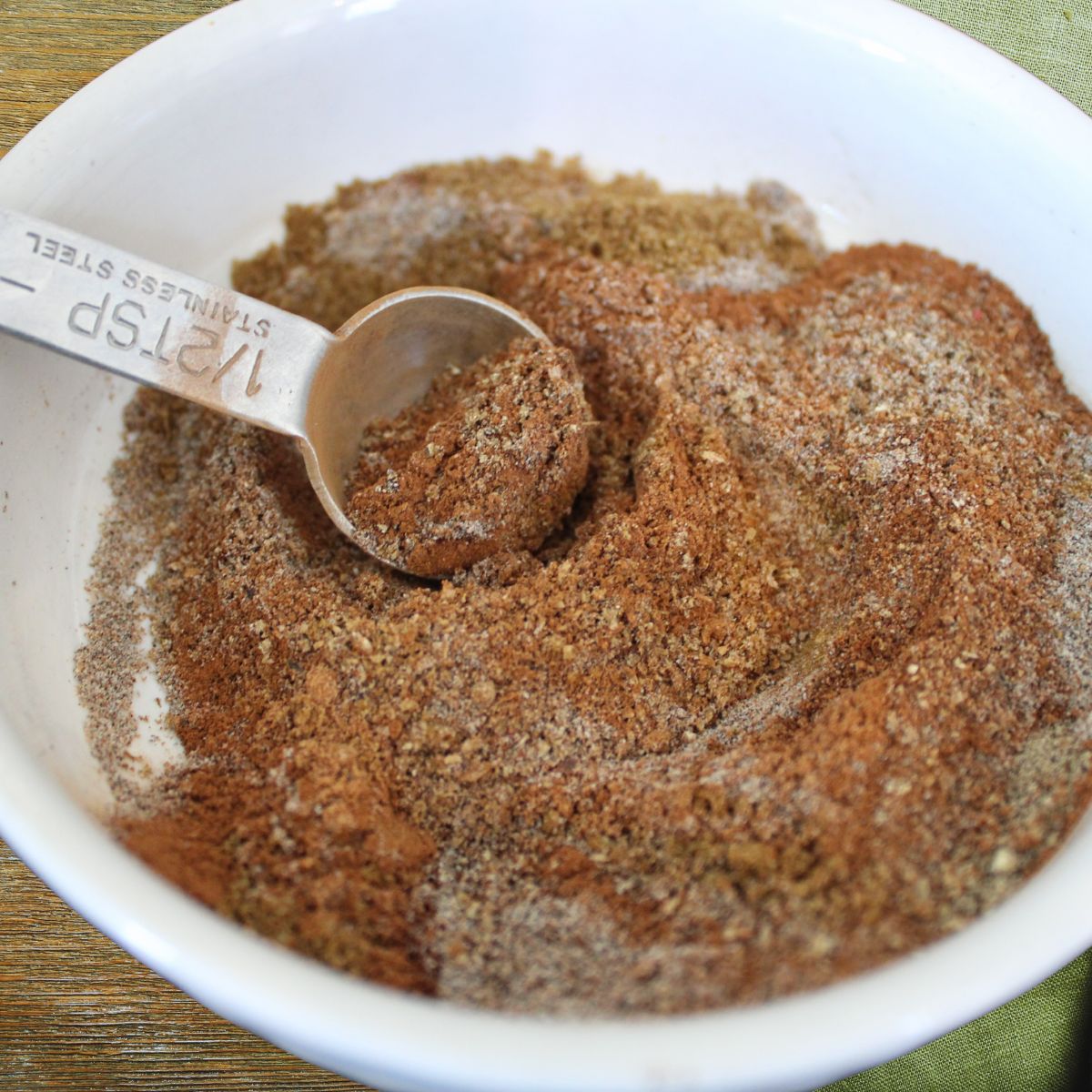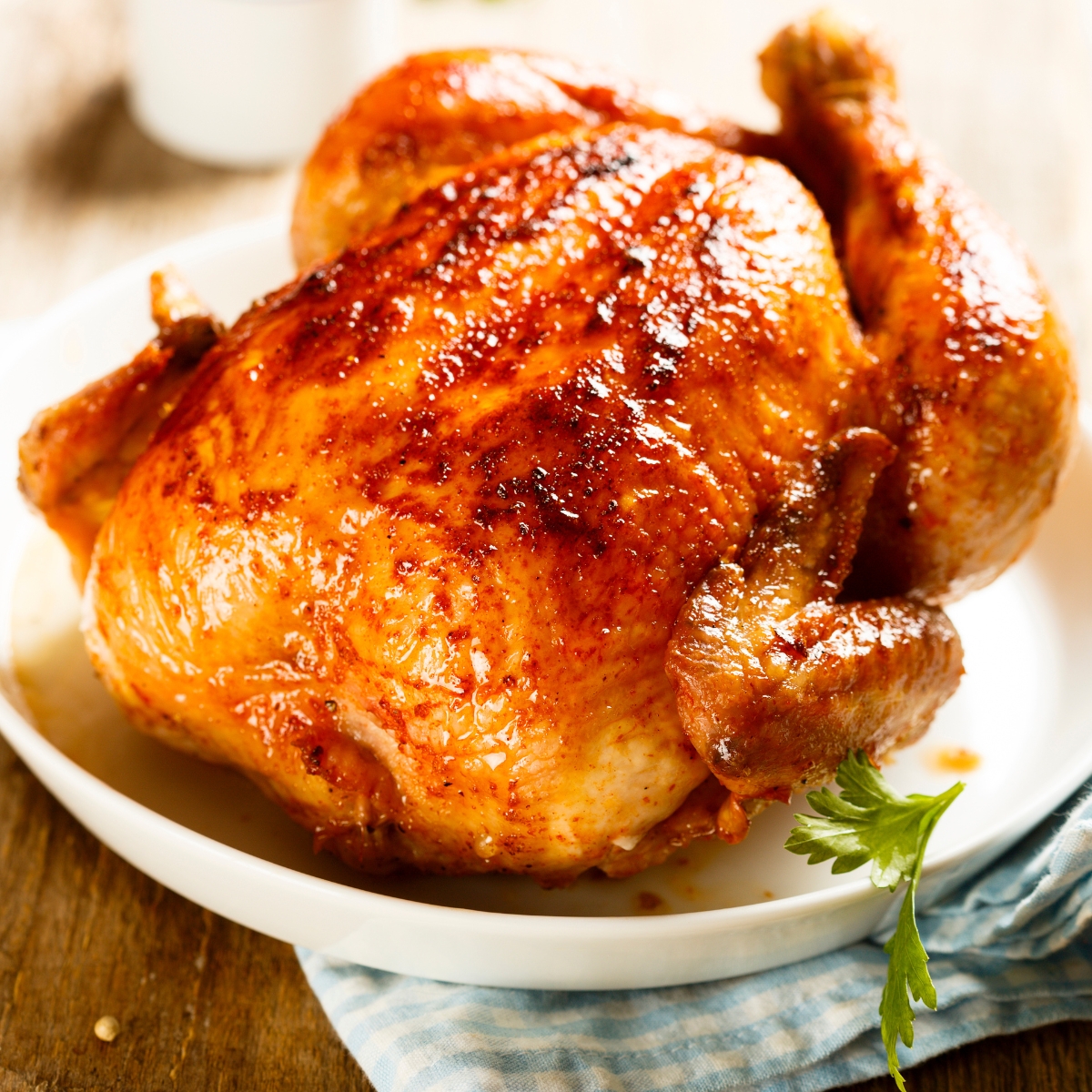How to Make Nourishing Bone Broth in a Slow Cooker
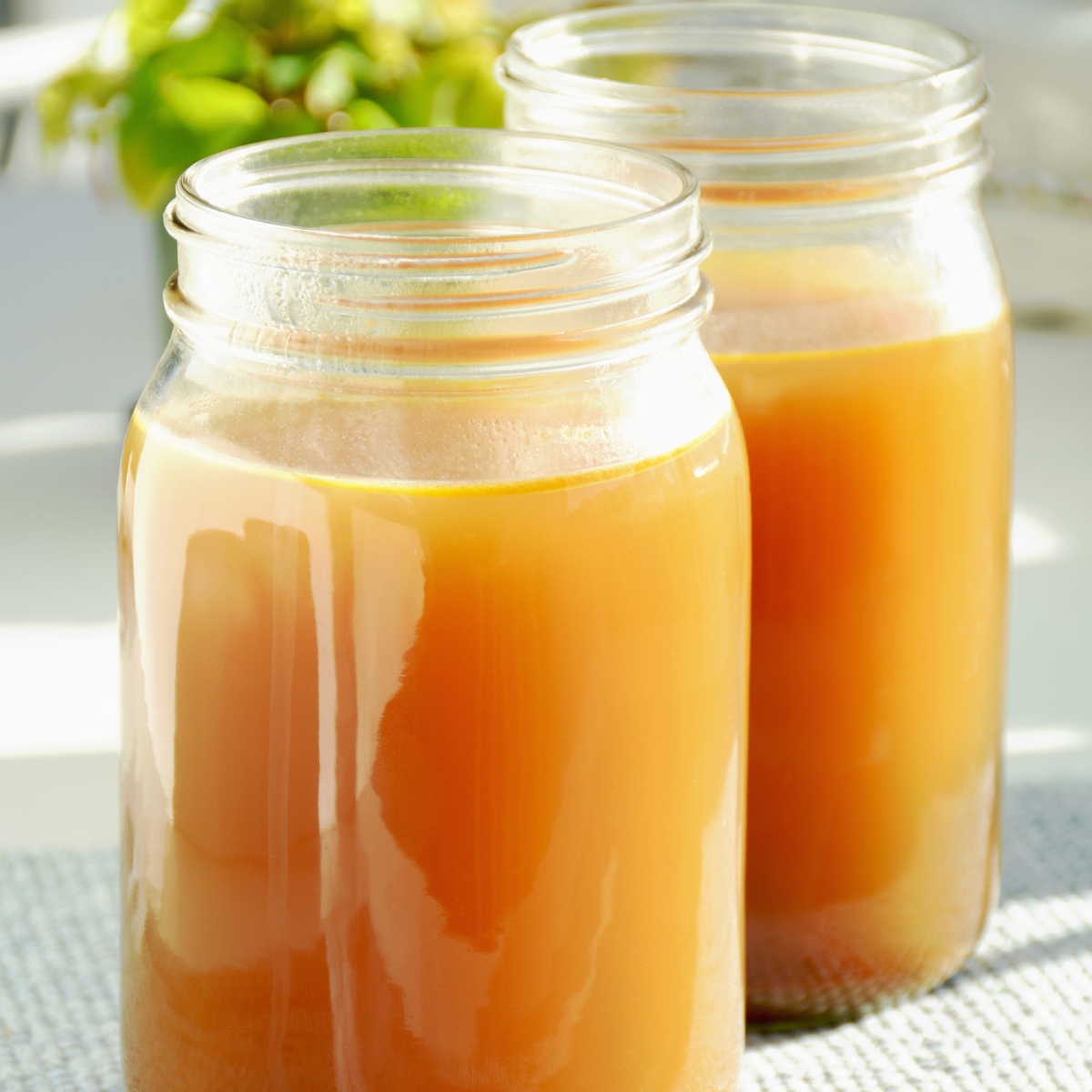
Are you curious about the health benefits of bone broth? If you’re like me you may be experiencing sticker shock at the price of store-bought broths. The good news is that making homemade broth is incredibly easy, and is a great way to use up leftovers from last nights chicken dinner. Learn how to take your leftover chicken bones, and pan drippings and turn them into a nourishing homemade chicken bone broth with this super easy set-it-and-forget-it slow cooker bone broth recipe. In this article, we will also cover some of the health benefits of bone broth, some ways to incorporate it into your family’s regular diet, and how to store it. And If you’re looking for a great roast chicken recipe the whole family will love, check out our Easy Dutch Oven Roast Chicken Recipe!
Are Broth and Stock the Same thing?
While making a homemade stock is a similar process to a broth recipe, the main difference is in the ingredients. People make stocks using bones, whereas they make broths using meat and skin. This bone broth recipe combines the benefits of using both the bones and skin, and I like to incorporate the pan drippings for an extra depth of flavor. Many broth recipes typically call for salt, but I prefer adding it later when I use my bone broth in a homemade soup recipe.
Then there are vegetable stocks. These, of course, do not contain any meat and typically involve using saved veggie scraps, with the option of adding gelatin to help thicken the stock.
Health Benefits of Chicken Bone Broth
Collagen Rich
When you slow cook a batch of bone broth, this causes the connective tissue in the bones to break down and release their collagen content. When you consume bone broth made from healthy pasture-raised chickens, your body can then break down the collagen into amino acids (or protein building blocks), which will then support the collagen production happening within your own bodies. Collagen is probably most well-known for supporting skin health, nails, and hair, but it is also helpful in supporting gut health.
Gelatin Content
Don’t throw away the layer of fat that rises to the top! This gelatin is the result of the collagen breaking down during the cooking process, Gelatin has the same amino acid makeup as collagen, and will also support your skin health and gut health too!
Supports Gut Health
Enterocytes line the small intestine, responsible for transporting digested nutrients into the bloodstream while leaving everything else behind to be moved through the intestinal tract and eliminated as waste. When this barrier of enterocytes is damaged, it leaves space for contents of the small intestine to escape into the bloodstream. In a healthy individual, the body quickly repairs the epithelial junction. However, as in the case of the ever increasingly common dysbiosis (or imbalance in gut bacteria), the body can no longer keep up with repairs and intestinal permeability (or leaky gut develops). Glutamine and Glycine, the two main amino acids that constitute collagen and gelatin, have shown to soothe inflammation in the gut lining and support the gut lining epithelial junctions (barriers).
Supports the Immune System
Studies have shown that as much as 80% of immune cells are located in the gut, so by supporting the health of the gut lining, we can effectively support the immune system as well. Read more about the link between the link between gut health and the immune system here.
How to Make Nourishing Bone Broth in a Slow Cooker
Equipment Needed
- Slow Cooker, 6 quarts or larger
- Fine Mesh Strainer
- Stock pot, or a pot large enough to hold at least 1 gal
Ingredients
- Leftover meat, bones, skin, and pan drippings from your cooked chicken (pasture raised chickens will yield the highest nutrient density)
- Gizzards set aside from the roasted chicken (optional)
- Two chicken feet (optional)
- 2 TBSP apple cider vinegar
- 1 large onion, roughly chopped
- 4-6 cloves of garlic, peeled and crushed
- 2 large carrots, coarsely chopped
- 3 celery stalks, coarsely chopped
- Filtered water
Instructions
- Add all ingredients to the Slow Cooker. Pour in enough water to cover everything, filling your slow cooker to about three-quarters full or the max fill line (the amount will vary depending on the size of your slow cooker).
- Turn slow cooker on low and cook for a minimum of 6 hours, up to 24 hours. The long cooking time gives the broth a much richer flavor.
- Throughout the cooking process, because of the long cooking time some of the water may evaporate. You may wish to add a little bit more water halfway through. However this step is optional.
- When the broth finishes cooking, place a fine mesh strainer over a large pot.
- With a slotted spoon remove the chicken bones, feet if you’ve added them, onions, garlic, carrots, and celery. Place them it the fine mesh strainer to allow any excess liquid to drip off into your pot.
- Once all that remains is the liquid, ladle the broth into the pot, still using the fine mesh strainer to catch any smaller pieces
- When the broth has cooled to room temperature, either ladle it into mason jars (see notes), or plastic containers (such as old yogurt containers).
Notes
- You can also use this recipe with other animal bones, such as beef bones or turkey bones, for similar health benefits. Beef bone broth will have a slightly higher fat content, but will be lower in amino acids, While turkey broth will have a slightly stronger flavor than chicken broth.
- If freezing your broth in a mason jar, fill the jar top about 3 inches below the top of the jar, and place the jar upright in the freezer with the lid on loosely at first allowing for expansion. Once the broth is fully frozen, tighten the lid.
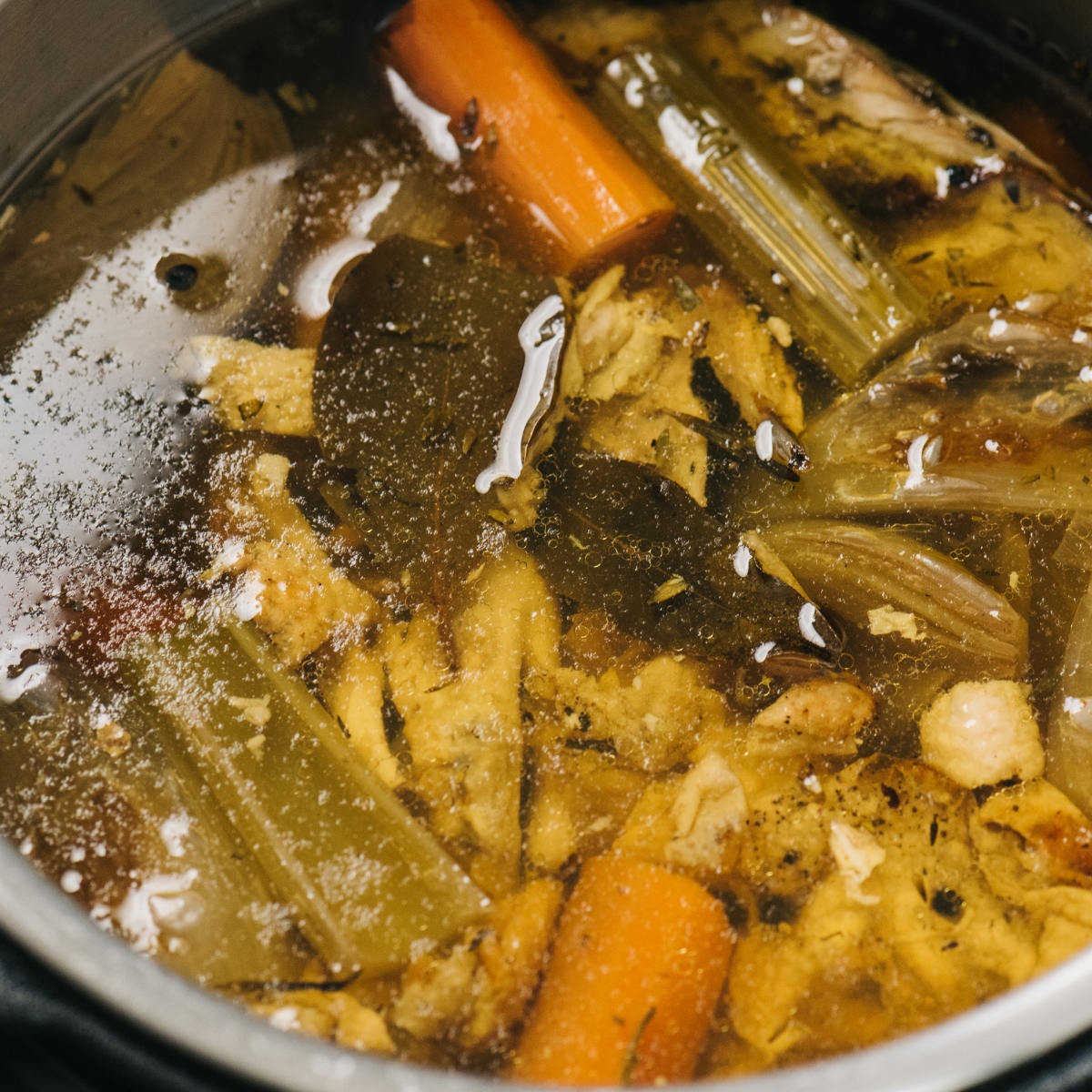
The Advantages of Making Broth in a Slow Cooker
Because bone broth requires such a long cooking to maximize flavor and health benefits, letting it simmer in a slow cooker is my favorite way to make it. Just toss the leftover bones, skin, and pan drippings from your roast chicken dinner into the slow cooker, set it on low heat, and set-it-and-forget-it until it’s time to freeze your broth.
You may also prefer this method if you’re like me and don’t feel comfortable going to sleep with the stove on while the broth simmers overnight. Additionally, running a slow cooker for up to 24 hours will use a lot less electricity than running your stove for the same amount of time.
Ways to Use Bone Broth
So you’ve made your first batch of crock pot bone broth. Now What?
Once your bone broth has cooled to room temperature, either ladle it into mason jars, or plastic containers (I like to save our old yogurt containers as I find they stack well in the freezer.)
If you’re freezing your broth in mason jars, fill the jars to about 3 inches below the top, and place the jar upright in the freezer with the lid on loosely at first allowing for expansion. Once the broth is fully frozen, tighten the lid.
This slow cooker chicken bone broth makes the perfect base for soups, adding richness in flavor and a little added protein to every serving. And on a cold winter day, or when you’re feeling a little under the weather, simply warm up some broth on the stove, add a pinch of sea and enjoy the immune system supportive benefits bone broth has to offer.
How To Make Nourishing Bone Broth in a Slow Cooker
Equipment
- Slow Cooker 6 quarts or larger
- Fine Mesh Strainer
- Stock Pot or a pot large enough to hold at least 1 gal
Ingredients
- leftover meat, bones, skin, and pan drippings from your cooked chicken (pasture raised chickens will yield the highest nutrient density)
- gizzards set aside from the roasted chicken optional
- 2 chicken feet optional
- 2 tbsp apple cider vinegar
- 1 large onion coarsely chopped
- 4-6 garlic cloves peeled and crushed
- 2 large carrots coarsely chopped
- 3 celery stalks coarsely chopped
- filtered water
Instructions
- Add all ingredients to the Slow Cooker and add enough water so that everything is covered, and your slow cooker is about three quarters full, or to the max fill line (amount will vary depending on the size of your slow cooker)
- Turn slow cooker on low and cook for a minimum of 6 hours, up to 24 hours. The long cooking time gives the broth a much richer flavor
- Throughout the cooking process, because of the long cooking time some of the water may evaporate. You may wish to add a little bit more water halfway through. However this step is optional
- When the broth is finishes cooking, place a fine mesh strainer over a large pot
- With a slotted spoon remove the chicken bones, feet if you've added them, onions, garlic, carrots, and celery. Place them it the fine mesh strainer to allow any excess liquid to drip off into your pot. They can now be composted
- Once all the chicken bones, feet, and vegetables have been removed, ladle the broth into the pot, still using the fine mesh strainer to catch any smaller pieces
- When the broth has cooled to room temperature, either ladle it into mason jars (see notes), or plastic containers (such as old yogurt containers)
Notes
- This recipe can also be used with other animal bones such as beef bones or turkey bones for similar health benefits. Beef bone broth will have a slightly higher fat content, but will be lower in amino acids, While turkey broth will have a slightly stronger flavor than chicken broth.
- If freezing your broth in a mason jar, fill the jar top about 3 inches below the top of the jar, and place the jar upright in the freezer with the lid on loosely at first allowing for expansion. Once your broth is fully frozen, tighten the lid.
References
- Wiertsema, Selma P et al. “The Interplay between the Gut Microbiome and the Immune System in the Context of Infectious Diseases throughout Life and the Role of Nutrition in Optimizing Treatment Strategies.” Nutrients vol. 13,3 886. 9 Mar. 2021, doi:10.3390/nu13030886



